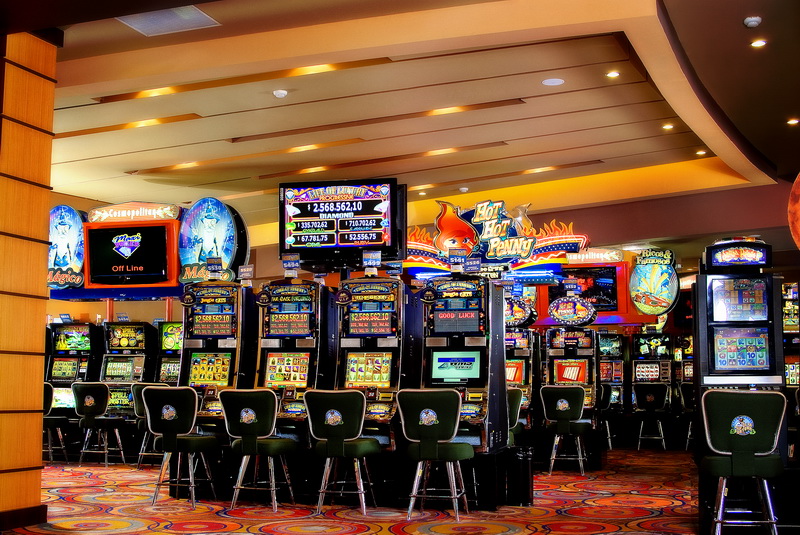The fascinating Psychology That drives Gambling Game Development

Casino games have long captivated the human imagination, drawing participants into a universe filled with chance, strategy, and the allure of excitement. Each activity is painstakingly crafted not just for entertainment, but also to inspire particular emotional responses that keep gamblers immersed and interested. Understanding the reasons behind these designs reveals much about how human psychology plays a crucial role in the gaming experience.
From the dazzling lights and vibrant sounds to the sophisticated layering of rules and rewards, casino games are designed to create an atmosphere of excitement and eagerness. Game designers leverage mental cues to influence participant behavior, whether through the use of jackpots, close-call situations, or social connections. By examining these elements, we can better appreciate how casino games fulfill not just a desire for entertainment, but deeper psychological needs for thrill and risk.
Comprehending Gamer Behavior
Casino games are engineered with a thorough understanding of gamer psychology, which is crucial for drawing in and retaining players. The rush of the game, alongside the expectation of winning, produces a strong allure. Game designers make use of elements like audio cues, dynamic graphics, and captivating gameplay to capture attention and generate emotional responses. These sensory elements enhance the total environment, making players feel more involved in the game.
Another notable aspect of player behavior is the concept of risk versus reward. Casino games often balance risky situations with the potential for considerable rewards, which can result in the event known as near-miss phenomenon. When players come near to winning, the brain produces dopamine, bolstering their behavior and encouraging them to continue playing in search of that hard-to-reach win. This cycle of hope and letdown plays a key role in how games are constructed and marketed.
Lastly, social factors also play a critical role in player behavior at casinos. Many games are designed to be played in teams or alongside other players, creating a sense of togetherness and communal experience. The interaction inherent in games like blackjack enhances enjoyment and can culminate in prolonged gaming periods. Designers take advantage on this by crafting environments that encourage players to linger, interact, and come back, making the overall casino experience more inviting.
The Role of Visuals and Audio
Imagery and sound play a crucial role in enhancing the gambler’s experience within gambling games. Designers utilize bright colors, eye-catching graphics, and engaging animations to grab players' attention and maintain their interest. The use of motifs, such as adventure or opulence, helps create an engaging atmosphere that transports players into a different world. By connecting to the senses, these elements contribute to a heightened emotional response, prompting players to engage more profoundly with the games.
Sound design is just as important in reinforcing the experience of casino games. The combination of ambient music, sound effects for winning combinations, and ambient noises creates an sound landscape that holds players enthralled. Audio cues associated with wins, such as chiming bells or celebratory music, evoke feelings of thrill and satisfaction, prompting players to continue playing. These sound cues are carefully placed to enhance the excitement of the game and create a more immersive experience.
Moreover, the synchronization of visuals and sound is crucial for supporting the game's overall theme and mood. Each element should align harmoniously to create a cohesive experience that pulls players in. The effective use of this integration not only enhances user enjoyment but also boosts the chances of return play, as players become more invested in the immersive world that the casino games offer. This thoughtful integration of visuals and audio ultimately enhances player engagement and loyalty.
Incentive Structures and Participation
The creation of gambling games heavily relies on reward systems to keep players engaged and returning for more. These systems are rooted in behavioral principles that take advantage of human behavior and desire. Players are often driven by the thrill of success, which is supported by instant responses through the game structure's mechanics. This instant gratification not only enhances the gaming experience but also cultivates a feeling of success, encouraging players to keep playing in hopes of bigger gains.
Casinos adopt various reward structures, including jackpots, extra rewards, and increased rewards, to captivate players. sports betting sites not on GamStop These elements create a level of excitement that sustains engagement. Additionally, the unpredictability of outcomes plays a crucial role in sustaining interest. The variable reward system, where wins are unpredictable but occur often enough, maintains participants on edge and driven to continue participating. This loop of hope and anticipation is essential to the effectiveness of casino games.
Furthermore, community aspects, such as tournaments and collaborative options, boost the engagement factor by leveraging the desire to compete of participants. The communal aspect of playing with others can amplify the excitement of winning and create a community atmosphere within the gaming space. By integrating these social dynamics with effective reward systems, casino games don’t just offer entertainment but also foster a stronger bond among players, solidifying their commitment to the gaming experience.
